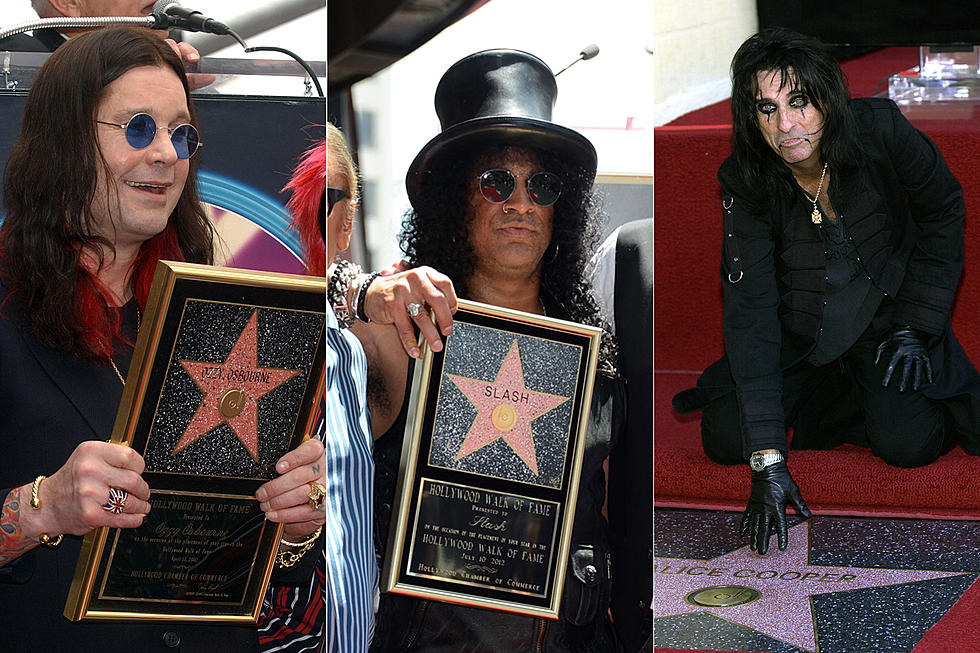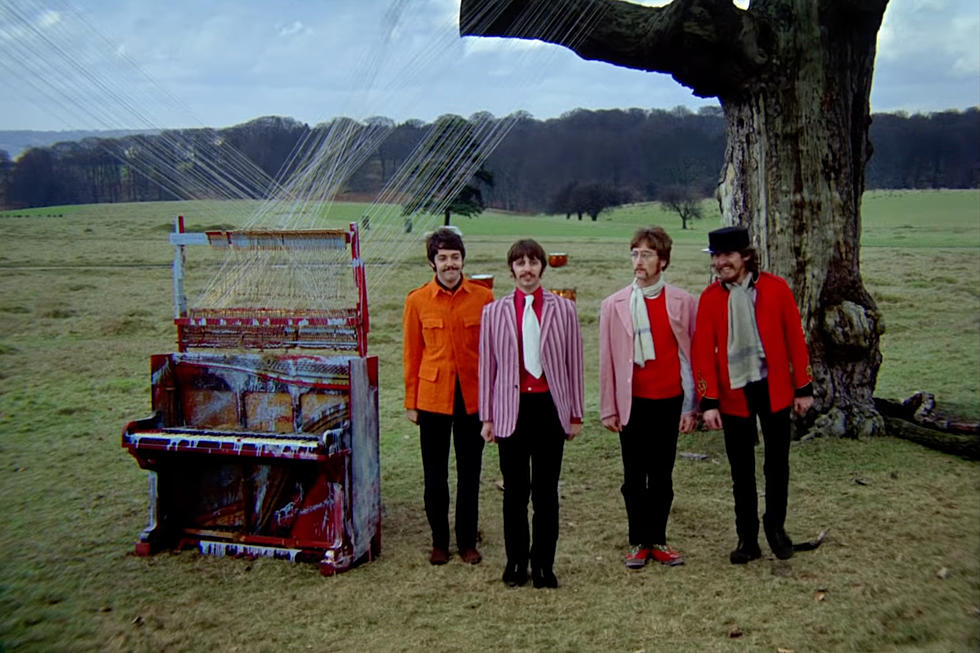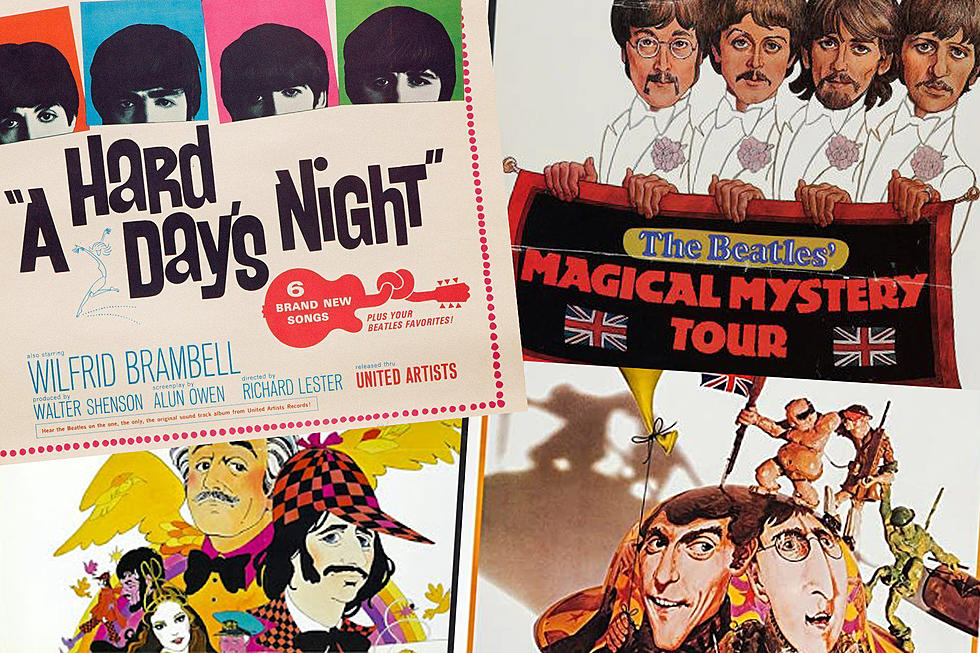‘Lucy in the Sky With Diamonds’ Finds John Lennon in ‘Wonderland’: The Story Behind Every ‘Sgt. Pepper’ Song
The Beatles’ most famous tribute to the effects of drugs had nothing to do with psychedelic drugs. Well, maybe not nothing…
In 1967, “Lucy in the Sky With Diamonds” became infamous as a song about hallucinogenic drugs, what with its fantastical imagery and title that spelled out LSD, if you lined up the nouns’ initials. The Beatles only conflated matters when Paul McCartney admitted to trying LSD in the British media. It became gospel: “Lucy” was about tripping on LSD.
Yet, as long as John Lennon was alive, he maintained this was not the case. It’s not as if the Beatle singer-guitarist had any reason to lie. Lennon, as a pillar of the counter-culture, could only benefit by being associated with the use of experimental drugs. Besides, he had plainly admitted the effects of drugs on other Beatles songs he had written, such as “She Said She Said” and “Doctor Robert.”
“This is the truth: my son came home with a drawing and showed me this strange-looking woman flying around,” Lennon said on The Dick Cavett Show in 1971. “I said, ‘What is it?’ and he said, ‘It’s Lucy in the sky with diamonds,’ and I thought, ‘That's beautiful.’ I immediately wrote a song about it.”
Everyone, from McCartney to John’s first wife Cynthia, confirms this version of events – even the artist himself, John’s son Julian Lennon. He was a four-year-old nursery school student at the time who had painted a picture of his classmate Lucy O’Donnell, a little girl he had grown fond of. Lennon’s friends remember him hanging up this picture that young Julian had created of a little girl flying above the ground, surrounded by stars which Julian called “diamonds.”
Julian’s artwork, and the phrase, stuck with dad, who began to build a song around the idea in February of 1967, a couple of months after the Beatles had begun work on their new album. Lennon was reminded of the type of characters and settings in Lewis Carroll’s Alice in Wonderland books. In fact, the first line of “Lucy in the Sky With Diamonds” (“Picture yourself on a boat on a river…”) is a paraphrase of some lines in Through the Looking Glass that described Alice in a boat under a sunny sky.
“It was Alice in the boat,” Lennon told Playboy in 1980. “She is buying an egg, and it turns into Humpty Dumpty. The woman serving in the shop turns into a sheep, and the next minute they are rowing in a rowing boat somewhere, and I was visualizing that.”
Lennon’s imagination began to run rampant, creating a fantasy world of “tangerine trees and marmalade skies.” Perhaps some of these objects were influenced by visions experienced on drug trips – after all, “kaleidoscope eyes” sounded to many an apt description of being under the sway of LSD. When John got stuck for phrases, he called on McCartney, who added bits like “cellophane flowers” and “newspaper taxis.” On Feb. 28, 1967, the two brought their new composition into EMI’s Abbey Road studios with the idea of recording the song with George Harrison and Ringo Starr, with the assistance of producer George Martin.
But, in true Lennon fashion, he hadn’t fully thought out “Lucy in the Sky With Diamonds,” and what was planned as a recording session turned into an evening of rehearsal. A reporter from Life magazine was there to chronicle the creativity between the hours of 8PM and 3AM, as the band members decided on the right tempos and keys and the appropriate musical accompaniment.
“We are light years away from anything tonight,” Martin admitted to the reporter. “They know it is awful now, and they’re trying to straighten it out. It may be a week before they’re pleased, if ever. They’re always coming up with something new they’ve just learned, something I wouldn’t dream of. They never cease to amaze me.”
Actually, it would not take a week, just another day for the Beatles to gain a good handle on “Lucy.” In their March 1 session, the band recorded the basic track for the song, which started out in 6/8 time, but switched to 4/4 on the choruses. Lennon sang a “guide vocal” and played maracas, while Starr was on drums, Harrison on acoustic guitar and McCartney played the Lowery DSO Heritage Deluxe organ. It was this instrument that would provide the song’s distinctive, twinkling intro, using presets of harpsichord, vibraharp, guitar and “music box.”
On both March 1 and 2, the boys built upon this foundation, scrapping just about everything except the Lowery and the drums, but adding McCartney’s bass, Harrison’s electric guitar and Lennon’s and McCartney’s vocals to the mix. George brought an Eastern tinge to the sessions by replacing his acoustic guitar with the tamboura, a droning Indian instrument. Additionally, he brought an Indian influence to his lead part.
“During vocals in Indian music they have an instrument called a sarangi, which sounds like the human voice, and the vocalist and sarangi player are more or less in unison in a performance,” Harrison said. “For ‘Lucy’ I thought of trying that idea, but because I’m not a sarangi player I played it on the guitar. In the middle-eight of the song (‘cellophane flowers…’) you can hear the guitar playing along with John’s voice. I was trying to copy Indian classical music.”
Another hallmark of sonic experimentation in “Lucy in the Sky With Diamonds” was that so much of the song was manipulated via tape speeds. The song’s basic track and Lennon and McCartney’s vocal tracks were recorded at slightly different speeds (between 45 and 49 cycles per minute, as opposed to the standard 50 cycles per minute) to make the sounds and voices sound a little higher and faster. That’s why John appears to have sucked in a bit of helium on the verses to the psychedelic song.
Although the “Lucy” sessions had begun slowly, one of the most famous songs on Sgt. Pepper’s Lonely Hearts Club Band had come together in two days, which was relatively fast given many of the complicated compositions that ended up on the album. The song was originally slotted in as the last tune on Side One, but switched places with “Being for the Benefit of Mr. Kite!” and gained a more prominent position as the first song to follow the one-two opener of “Sgt. Pepper's Lonely Hearts Club Band” and “With a Little Help From My Friends.”
After Sgt. Pepper was released at the beginning of June 1967, “Lucy” became a representation of the creative sounds and lyrics to be found on the Beatles’ latest LP, as well as a paragon of psychedelic rock at the time. Lennon, who claimed he was pleased with the composition if not the recording, returned to "Lucy" with a reference in “I Am the Walrus,” while John Fred and His Playboy Band had a big hit with the 1967 parody of the song, “Judy in Disguise (With Glasses).” The tune even knocked another Beatles song, “Hello, Goodbye,” from the No. 1 spot on the Billboard chart.
Watch the Video for "Judy In Disguise (White Glasses)"
With a little help from his friend Lennon, Elton John recorded a cover version of “Lucy in the Sky With Diamonds” in 1974. The former Beatle even made his final onstage appearance with Elton that year, performing “Lucy” (as well as “Whatever Gets You Thru the Night” and “I Saw Her Standing There”) at Madison Square Garden with the Rocket Man and his band.
Decades later, after serving as inspiration for fossils and white dwarf stars, “Lucy” continues to be one of the Beatles’ best-known songs. A long time ago, the phrase “Lucy in the Sky With Diamonds” became shorthand for druggy rock, even if this particular song had its roots in a child’s painting.
Beatles' 'Sgt. Pepper's' Cover Art: A Guide to Who's Who
More From KQCL Power 96










